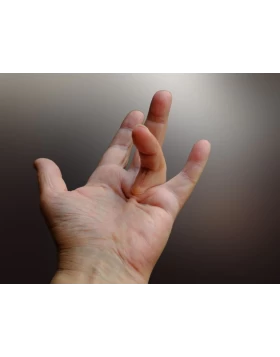De Quervain's Tenosynovitis
De Quervain's Tenosynovitis, named after the Swiss surgeon Fritz de Quervain, is a condition involving inflammation of the tendons in the first dorsal compartment of the wrist region. This inflammation results from overuse of the thumb, common among new mothers and people in manual occupations. Symptoms include thumb and wrist pain, stiffness and swelling, often affecting people aged 30 to 50, particularly women. At the Geoderma clinic, we perform surgery under local anesthesia that opens the tendon sheath and frees the tendons, allowing immediate mobility and quick recovery.

Do you have additional questions about the service?
What are the symptoms of De Quervain syndrome?
Symptoms include pain in the thumb that is aggravated by use of the thumb, pain in the wrist on extension of the thumb that is reflected centrally to the forearm, stiffness in the wrist and thumb, and slight swelling on the dorsal side of the wrist.
How is the surgery done?
The surgery is performed under local anesthesia and requires a small incision of approximately 2 cm at the height of the first dorsal compartment in the wrist area, the tendon sheath is opened and the tendons are released. The duration of the surgery is 15-20 minutes.
What is the post-surgery care process?
The first post-operative check-up takes place in the clinic one day after surgery. The patient should keep the arm in a retracted position. This is followed by immobilization of the thumb for 3 days after the surgery and the stitches are removed 12-14 days after the surgery.
Are there any possible complications associated with the surgery?
Although complications are rare, potential risks include injury to a branch of the sciatic nerve and infection of the surgical wound. However, these incidents are very rare.


 Ελληνικά
Ελληνικά




